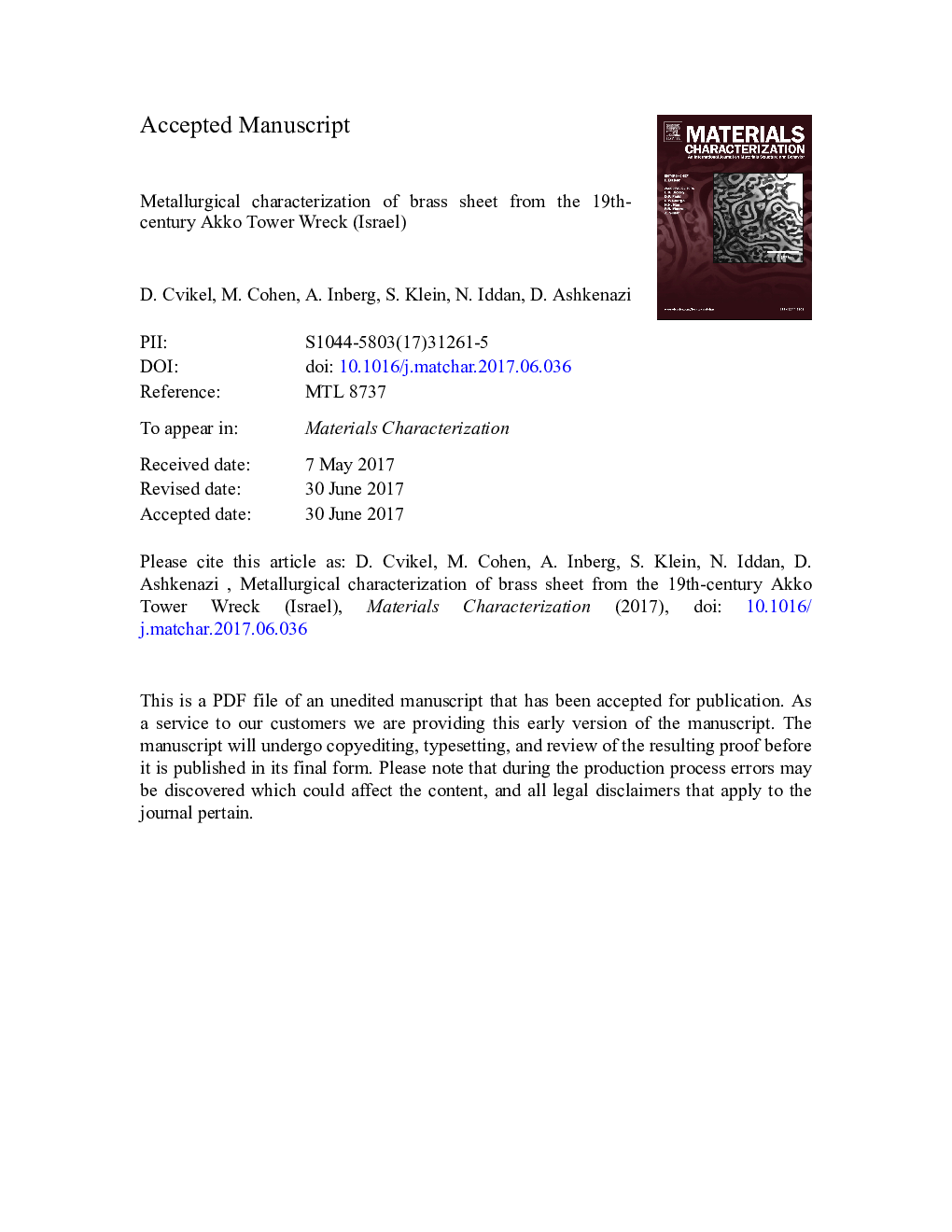| Article ID | Journal | Published Year | Pages | File Type |
|---|---|---|---|---|
| 5454582 | Materials Characterization | 2017 | 48 Pages |
Abstract
The Akko Tower Wreck is the remains of a 25-m-long merchant brig, dated to the first half of the 19th century. A well preserved piece of brass sheathing was found in the shipwreck, retrieved and examined by non-destructive and destructive metallurgical methods, including visual testing, XRF, OES, light microscopy, SEM-EDS examination, microindentation hardness measurements and lead isotope analysis. The results demonstrate that the sheet is made of α-brass, containing about 34 wt% Zn. Its thickness (average 0.85 mm) and microstructure indicate that it was produced as rolled sheet, annealed during its manufacturing process. Its composition and manufacturing process indicate that it was produced during the first half of the 19th century, thus supporting the dating of the ship. The lead isotope analysis suggests that the raw material most probably originated in Great Britain, similarly to brass nails retrieved from the ship. This is an example of the exploitation of the corrosion resistance of α-brass sheet for use as sheathing to protect a ship against Teredo navalis and to improve its sailing qualities by its anti-fouling properties.
Related Topics
Physical Sciences and Engineering
Materials Science
Materials Science (General)
Authors
D. Cvikel, M. Cohen, A. Inberg, S. Klein, N. Iddan, D. Ashkenazi,
